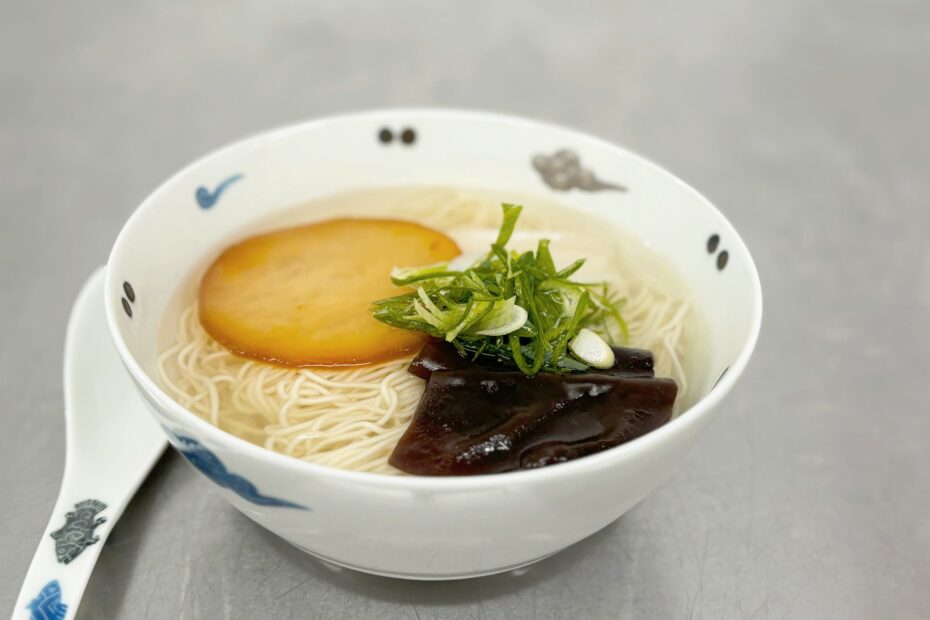[Sennyu-ji Temple] The Chinese restaurant Sennyu-ji Saika, which cannot take reservations, will be offering “soba seating” for two days only, November 26th and 27th, 2024.
Temple Sennyuji Press release: November 20, 2024 The Chinese restaurant Sennyuji Saika, which is unable to take reservations, will be offering “soba seats” for two days only, November 26th and 27th, 2024. Information on events from Sennyu-ji Temple, the family temple of the Imperial Family
https://prcdn.freetls.fastly.net/release_image/150876/2/150876-2-8b1f4166b6220797d8350c510f462a28-3900×2194.jpg Sennyuji Saika Special Chinese Soba Sennyu-ji Temple (Higashiyama-ku, Kyoto City) will be offering Chinese restaurant “Sennyu-ji Saika” for two days only, November 26th (Tuesday) and 27th (Wednesday), at the rest area in front of the main temple in the grounds of Sennyuji Temple. We will be holding “Soba Seats (Chinese Soba)” by Mr. It was in 2014 that Sennyuji Saika opened a shop in a detached house in Sennyuji Yamauchi-cho. Since then, many customers have come from all over the country in search of delicious food, and the restaurant has gained a reputation as it is difficult to get reservations.
https://prcdn.freetls.fastly.net/release_image/150876/2/150876-2-cf3fba19dde8218b679a66a3102fa4ff-1290×1785.jpg Sennyuji Temple Saika In 2020, Sennyu-ji Temple will celebrate the 800th anniversary of the death of its founder, Shuncho Ritsushi. This time, Hiroto Saito, the owner and chef of Sennyuji Saika, created a special Chinese dish for Sennyuji Temple in which he topped it with sweet and spicy cooked daikon radish instead of chashu, in honor of the founder Shuncho Ritsushi who liked to eat daikon radish. We are fortunate to be able to provide soba noodles. Based on the salt ramen that also appears in Sennyuji Saika’s course menu, in addition to daikon radish, it is topped with live jellyfish from Okayama and thick Japanese dried gourd that is used at high-end sushi restaurants. Based on the teachings of Buddha, we have created an original menu for Sennyu-ji Temple that uses plant-based ingredients as much as possible. The daikon radish is stewed using a herbal medicine called chinpi, which is made from dried tangerine peels, and is sure to be a favorite among the founders of the temple. [Sennyuji Saika Soba Seat (*Chinese Soba) Implementation Overview] Date and time: From 11:00 on Tuesday, November 26th and Wednesday, November 27th, 2024 *Ends as soon as supplies last Location: At the rest area in front of Sennyuji Honbo Special Chinese noodles: 1000 yen (tax included) *Separate Sennyu-ji Temple admission fee required. Soba tickets will be sold on a first-come, first-served basis at Honbo Nokyojo from 9 a.m. gates open on the day of the event. We cannot accept reservations or reservations.
https://prcdn.freetls.fastly.net/release_image/150876/2/150876-2-0d5e9cf2ede3c3bdfdc695429a5ad567-1395×2700.jpg Shunju Rishi [About Sennyu-ji Temple and Kaizan Shuncho Rishi] Born in Higo Province (present-day Kumamoto Prefecture), Master Shunko entered Buddhism at a young age, and with great ambitions went to the Song Dynasty in China to seek Dharma.For about 12 years, he traveled to various places, focusing on Ritsu. He returned to Japan having mastered various studies such as Zen and Tendai. Quanyuji Temple was built on the model of the Song Dynasty temple where Master Shunchu studied, and also features important cultural properties such as the Seated Statue of Guan Yin Bodhisattva (Yang Guifei Kannon), which Master Shunchu and his disciples brought back from China. The cultural relics are still carefully passed down to this day.
https://prcdn.freetls.fastly.net/release_image/150876/2/150876-2-d08789c5d9cbda33326a99ff35ff0051-1800×2700.jpg “Yang Guifei Kannon Statue” Photography: Kosuke Sasaki A hidden treasure of Sennyu-ji Temple that has been preserved in vivid colors for over 800 years. Yang Guifei Guanyin statue The wooden statue of Sho Kannon, which was brought over from the Southern Song Dynasty in 1230, is enshrined in the hall just to the left after passing through the main gate of Sennyu-ji Temple. Because of its beauty, it is said that Emperor Xuanzong created the statue by copying the image of the late Yang Guifei, and it is a treasure of Sennyuji Temple that has been worshiped since the early Edo period as the “Yang Guifei Kannon Statue.” Even after more than 800 years, many of the colors still remain, and the statue is worthy of its name, with its sitting posture as if it were alive. Please visit us as well. [Head temple Sennyu-ji Temple] URL: https://mitera.org Access: About 10 minutes by taxi from JR/Kintetsu/Subway Kyoto Station 20 minutes walk from “Tofukuji Station” on JR Nara Line/Keihan Railway Approximately 10 minutes by car from Hanshin Expressway “Kamogawa West Exit” Address: 27 Sennyuji Yamauchicho, Higashiyama-ku, Kyoto 605-0977 TEL: 075-561-1551 Visiting hours: 9:00 to 17:00 (December to February until 16:30) *Admission reception closes 30 minutes before closing Admission to the temple: 500 yen (300 yen for elementary and junior high school students) Buddha hall, Yang Guifei Kannon Hall, treasure hall (Shinshoden), etc. Special admission: 500 yen ( Free for elementary school students and under when accompanied by a guardian ) Gozasho/Gozasho Garden *Due to events, some facilities may not be available for viewing on certain days or times.

This article was partly generated by AI. Some links may contain Ads. Press Release-Informed Article.